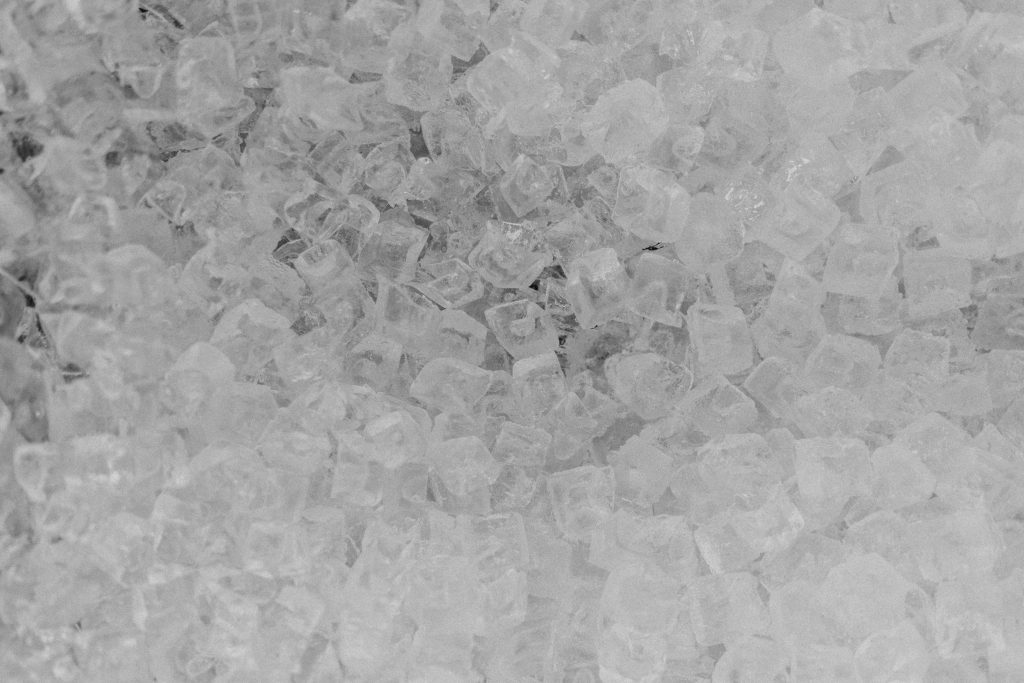5.13 Designer Drugs
Bath Salts or Designer Cathinones
(Synthetic Stimulants)
What are “Bath Salts”?
Synthetic stimulants often referred to as “bath salts” are from the synthetic cathinone class of drugs. Synthetic cathinones are central nervous stimulants and are designed to mimic effects similar to those produced by cocaine, methamphetamine, and MDMA (ecstasy). These substances are often marketed as “bath salts,” “research chemicals,” “plant food,” “glass cleaner,” and labelled “not for human consumption,” in order to circumvent the application of the Controlled Substance Analogue Enforcement Act. Marketing in this manner attempts to hide the true reason for the products’ existence—the distribution of a psychoactive/stimulant substance for abuse.
What is their origin?
Synthetic cathinones are manufactured in East Asia and have been distributed at wholesale levels
throughout Europe, North America, Australia, and other parts of the world.
What are common street names?
Bliss, Blue Silk, Cloud Nine, Drone, Energy-1, Ivory Wave, Lunar Wave, Meow Meow, Ocean Burst, Pure Ivory, Purple Wave, Red Dove, Snow Leopard, Stardust, Vanilla Sky, White Dove, White Knight, White Lightning.
What does it look like?

Websites have listed products containing these synthetic stimulants as “plant food” or “bath salts,” however, the powdered form is also compressed in gelatin capsules. The synthetic stimulants are sold in smoke shops, head shops, convenience stores, adult bookstores, gas stations, and on Internet sites and are often labelled “not for human consumption.”
How are they abused?
“Bath salts” are usually ingested by sniffing/snorting. They can also be taken orally, smoked, or put into a solution and injected into veins.
What is their effect on the mind?
These synthetic substances are abused for their desired effects, such as euphoria and alertness. Other effects that have been reported from the use of these drugs include psychological effects such as confusion, acute psychosis, agitation, combativeness, aggressive, violent, and self-destructive behaviour.
What is their effect on the body?
Adverse or toxic effects associated with the abuse of cathinones, including synthetic cathinones, include rapid heartbeat; hypertension; hyperthermia; prolonged dilation of the pupil of the eye; breakdown of muscle fibers that leads to release of muscle fiber contents into the bloodstream; teeth grinding; sweating; headaches; palpitations; seizures; as well as paranoia, hallucinations, and delusions.
What are their overdose effects?
In addition to the effects above, reports of death from individuals abusing drugs in this class indicate the seriousness of the risk users is taking when ingesting these products.
Which drugs cause similar effects?
They cause effects similar to those of other stimulants such as methamphetamine, MDMA, and cocaine.
What are Bath Salts legal status in Canada?
Mephedrone and methylone are regulated as controlled substances in Canada because they are deemed to be similar to amphetamine, which is listed as Item I in Schedule III of the Controlled Drugs and Substances Act (CDSA) (1)
For more Information on Bath Salts:
K2 /Spice

What is K2?
K2 and Spice are just two of the many trade names or brands for synthetic designer drugs that are intended to mimic THC, the main active ingredient of marijuana. These designer synthetic drugs are from the synthetic cannabinoid class of drugs that are often marketed and sold under the guise of “herbal incense” or “potpourri”.
Synthetic cannabinoids are not organic but are chemical compounds created in a laboratory. Since 2009, law enforcement has encountered numerous different synthetic cannabinoids that are being sold as “legal” alternatives to marijuana. These products are being abused for their psychoactive properties and are packaged without information as to their health and safety risks.
Synthetic cannabinoids are sold as “herbal incense” and “potpourri” under names like K2 and Spice, as well as many other names, at small convenience stores, head shops, gas stations, and via the Internet from both domestic and international sources. These products are labelled “not for human consumption” in an attempt to shield the manufacturers, distributors, and retail sellers from criminal prosecution. This type of marketing is nothing more than a means to make dangerous, psychoactive
substances widely available to the public.
What is its origin?
The vast majority of synthetic cannabinoids are manufactured in Asia without manufacturing requirements or quality control standards. The bulk products are smuggled into the United States typically as misbranded imports and have no legitimate medical or industrial use.
What are common street names?
There are numerous and various street names for synthetic cannabinoids as drug manufacturers try to appeal to and entice youth and young adults by labelling these products with exotic and extravagant names. Some of the many street names of synthetic marijuana are: “Spice, “K2″, Blaze, RedX Dawn, Paradise, Demon, Black Magic, Spike, Mr. Nice Guy, Ninja, Zohai, Dream, Genie, Sence, Smoke, Skunk, Serenity, Yucatan, Fire, and Crazy Clown.
What does it look like?
These chemical compounds are generally found in bulk powder form and then dissolved in solvents, such as acetone, before being applied to dry plant material to make the “herbal incense” products. After local distributors apply the drug to the dry plant material, they package it for retail distribution, again without pharmaceutical-grade chemical purity standards, as these have no accepted medical use, and ignoring any control mechanisms to prevent contamination or to ensure a consistent, uniform concentration of the powerful and dangerous drug in each package.
How is it abused?
Spraying or mixing the synthetic cannabinoids on plant material provides a vehicle for the most common route of administration – smoking (using a pipe, a water pipe, or rolling the drug-laced plant material in cigarette papers). In addition to the cannabinoids laced on plant material and sold as potpourri and incense, liquid cannabinoids have been designed to be vaporized through both disposable and reusable electronic cigarettes.
What are its overdose effects?
Overdose deaths have been attributed to the abuse of synthetic cannabinoids, including death by a heart attack. Acute kidney injury requiring hospitalization and dialysis in several patients reportedly having smoked synthetic cannabinoids has also been reported by the Centers for Disease Control and Prevention.
Which drugs cause similar effects?
THC, is the main psychoactive constituent of marijuana.
What is its effect on the mind?
Acute psychotic episodes, dependence, and withdrawal are associated with the use of these synthetic cannabinoids. Some individuals have suffered from intense hallucinations. Other effects include severe agitation, disorganized thoughts, paranoid delusions, and violence after smoking products laced with these substances.
What is its effect on the body?
State public health and poison centres have issued warnings in response to adverse health effects associated with the abuse of herbal incense products containing these synthetic cannabinoids.
These adverse effects included tachycardia (elevated heart rate), elevated blood pressure, unconsciousness, tremors, seizures, vomiting, hallucinations, agitation, anxiety, pallor, numbness, and tingling. This is in addition to the numerous public health and poison centres that have similarly issued warnings regarding the abuse of these synthetic cannabinoids.
What is k2/spice’s legal status in Canada
Health Canada says smoking synthetic cannabinoids can result in symptoms that range from seizures to hallucinations to acute psychosis. Proponents of the product — also known as “spice,” or K2 — stress that it is legal. But Health Canada(3) considers it a controlled substance if it gives the same effect as marijuana.
Synthetic Opioids
What is its origin?
Synthetic opioids are believed to be synthesized abroad and then imported into North America.
What do they look like?
Clandestinely produced synthetic opioids have been encountered in powder form and were identified on bottle caps and spoons, detected within glassine bags, on digital scales, and on sifters which demonstrates the abuse of these substances as replacements for heroin or other opioids. These drugs are also encountered as tablets, mimicking pharmaceutical opioid products. Clandestinely produced synthetic opioids are encountered as a single substance in combination with other opioids (fentanyl, heroin, U-47700) or other substances.
How are they abused?
Abuse of clandestinely produced synthetic opioids parallels that of heroin and prescription opioid analgesics. Many of these illicitly produced synthetic opioids are more potent than morphine and heroin and thus have the potential to result in a fatal overdose.
What are Synthetic Opioids?

Synthetic opioids are substances that are synthesized in a laboratory and that act on the same targets in the brain as natural opioids (e.g., morphine and codeine) to produce analgesic (pain relief) effects. In contrast, natural opioids are naturally occurring substances extracted from the seed pod of certain varieties of poppy plants. Some synthetic opioids, such as fentanyl and methadone, have been approved for medical use.
Clandestinely produced synthetic opioids structurally related to the Schedule II opioid analgesic fentanyl were trafficked and abused on the West Coast in the late 1970s and 1980s. In the 1980s, DEA controlled several of these illicitly produced synthetic opioids such as alpha-methyl fentanyl, 3-methylthiofentanyl, acetyl-alpha-methylfentanyl, beta-hydroxy-3-methylfentanyl, alpha-methylthiofentanyl, thiofentanyl, beta-hydroxyfentanyl, para-fluoro fentanyl, and 3-methylfentanyl.
As of 2013, there has been a re-emergence in the trafficking and abuse of various clandestinely produced synthetic opioids, including several substances related to fentanyl. Some common illicitly produced synthetic opioids that are currently encountered by law enforcement include, but are not limited to, acetyl fentanyl, butyryl fentanyl, beta-hydroxythiofentanyl, furanyl fentanyl, 4-fluoroisobutyrylfentanyl, acryl fentanyl, and U-47700. Clandestinely produced counterfeit oxycodone tablets that contain fentanyl. Opioid powder U-47700.
What are their effects?
Some effects of clandestinely produced synthetic opioids, similar to other commonly used opioid analgesics (e.g., morphine), may include relaxation, euphoria, pain relief, sedation, confusion, drowsiness, dizziness, nausea, vomiting, urinary retention, pupillary constriction, and respiratory depression.
What are their overdose effects?
The overdose effects of clandestinely produced synthetic opioids are similar to other opioid analgesics. These effects may include stupor, changes in pupillary size, cold and clammy skin, cyanosis, coma, and respiratory failure leading to death. The presence of the triad of symptoms such as coma, pinpoint pupils, and respiratory depression are strongly suggestive of opioid poisoning.
Which drugs cause similar effects?
Some drugs that cause similar effects include other opioids such as morphine, hydrocodone, oxycodone, hydromorphone, methadone, and heroin.
What is Synthetic Opioids in Canada?
A synthetic opioid has never been developed for use as a medicine. In Canada and around the world, U-47700 is being misused as a recreational drug. In Canada, from April to June 2016, 3 non-fatal overdoses were associated with U-47700.
For more Information on Synthetic Opioids in Canada:
Attribution:
Drugs, Health & Behavior by Jacqueline Schwab and Denise Salters is licensed under a Creative Commons Attribution-NonCommercial-ShareAlike 4.0 International License, with Canadian Content
References
- Legislative Services Branch. (2023j, January 14). Consolidated federal laws of Canada, Controlled Drugs and Substances Act. https://laws-lois.justice.gc.ca/eng/acts/c-38.8/page-1.html
- Figure 5.13.2 – Wikemedia. (n.d.). K2 Spice [Photo]. K2 Spice. https://commons.wikimedia.org/wiki/File:USMC-100201-M-3762C-001.jpg
- Unauthorized product containing synthetic cannabinoids sold from stores in Edmonton. (2017, August 24). Recalls and Safety Alerts. https://healthycanadians.gc.ca/recall-alert-rappel-avis/hc-sc/2017/64304a-eng.php?_ga=2.231065567.1384206184.1517954225-1412185756.1513370286
- Health Canada. (2019a, August 21). Consultation on the regulatory proposal to control U-47700. Canada.ca. https://www.canada.ca/en/health-canada/programs/consultation-regulatory-proposal-control-u47700.html
- DEA. (2017). Drugs of Abuse. Retrieved March 30, 2022, from https://www.dea.gov/sites/default/files/drug_of_abuse.pdf

